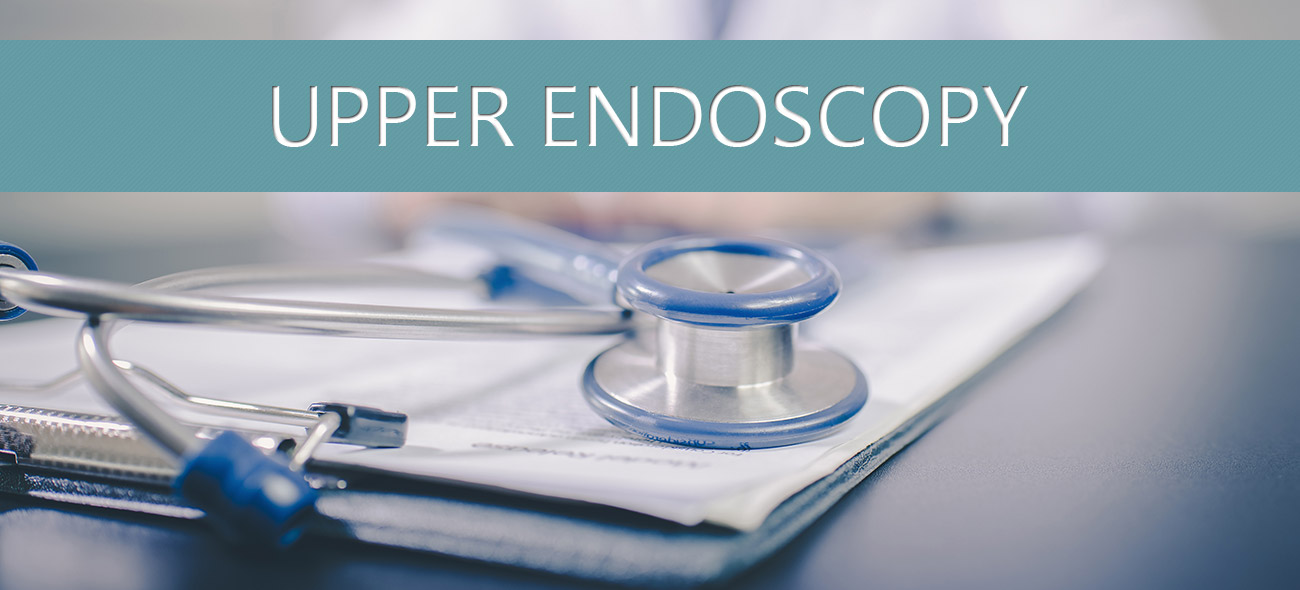Upper GI Endoscopy
UPPER ENDOSCOPY (EGD)
An upper endoscopy, also called EGD (esophagogastroduodenoscopy), is a visual examination of the upper GI tract, using a flexible fiber optic endoscope. The upper part of the gastrointestinal (GI) tract includes the esophagus, stomach and first segment of the duodenum (small bowel). This is performed primarily to identify and/or correct a problem in the upper GI tract.
REASONS
The most common reasons for the upper endoscopy include:
• Unexplained discomfort in the upper abdomen.
• GERD (gastro esophageal reflux disease)
• Persistent nausea and vomiting
• Upper GI bleeding (vomiting blood or blood in stool)
• Dysphasia (difficulty swallowing or food/liquids getting stuck when swallowing)
• Abnormal CT scan or MRI
• Removal of foreign body
• To check on progress of previously found polyps, tumors or ulcers
PREPARATION
You will be asked to NOT EAT OR DRINK ANYTHING for up to 4 to 8 hours before the test. The physician will provide instructions regarding their regular medications. You should arrange for a friend or family member to drive you home after the examination. You will not be permitted to drive due to the sedation you will receive for the procedure.
PROCEDURE
An intravenous line, to deliver the sedation, will be started before entering the procedure room. The procedure usually takes between 10 and 20 minutes to complete. Patients will often be given a medication spray that numbs the throat. Sedation is provided for relaxation. You will be monitored during the procedure and generally not aware of the examination.
The endoscope is inserted into the upper GI tract; this does not interfere with breathing. Take slow, deep breaths during the procedure. Air is introduced into the stomach, and intestines to allow the scope to pass through these areas.
Biopsies (taking tissue samples), or other treatments (treatment of bleeding, dilatation), may be performed, depending on what is found during the examination.
RECOVERY
After the exam, you will be moved to the recovery area to be observed while the sedation wears off. You may feel mild discomfort or bloating, as a result of the air inserted during the examination. You may also experience a mild sore throat; these usually resolve quickly. Once you are alert and oriented, your physician will explain the results to you. You may want to have your family member or friend present during this discussion, as the medication you received may make you forgetful. If any biopsies were taken, results are not available for 4 to 7 days. Fatigue is common following the procedure so you should plan to relax the rest of the day. Our nursing staff will provide you with a written copy of the findings and instructions and any patient education handouts that apply.
COMPLICATIONS
Upper endoscopy is a safe procedure and complications are uncommon. The following is a list of possible complications:
• Aspiration of food or fluids into the lungs
• Perforation (tear or hole in the tissue being examined)
• Bleeding from biopsies or removal of polyps
• Reactions to the sedation
• Undetected polyps
SUMMARY
Upper GI endoscopy is a simple outpatient exam that provides significant information that can diagnose and treat problems in the upper GI tract. Serious complications rarely occur from upper GI endoscopy.

